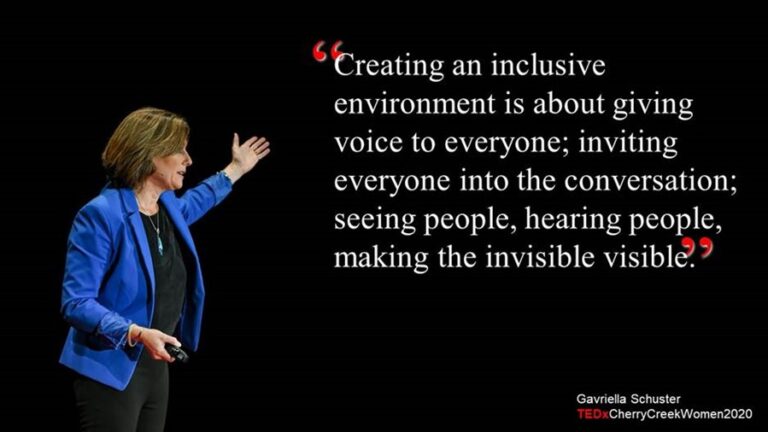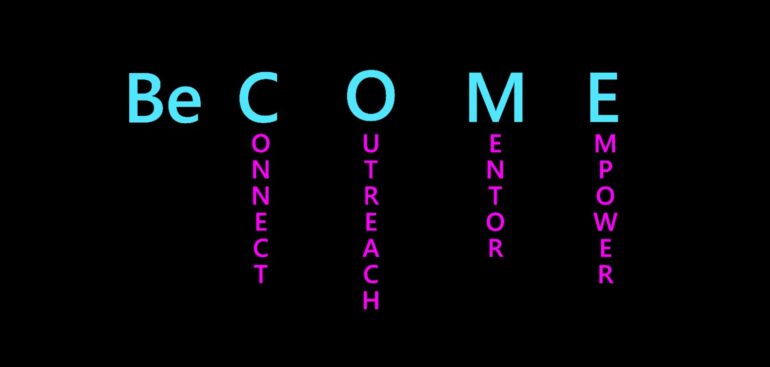Have you ever been fed up with something and thought to yourself, “WAIT! Why am I putting up with this?” I had one of those moments a few years ago and it set me on a path of change—a path that took an exciting turn a few months ago.
In November, I had the honor of giving a TEDx talk about something that has brought me heartache for years: the gender equity gap in the technology industry. After 30-years of regularly being the only woman in the room, I’m hopeful that sharing my story on the TEDx stage will be a catalyst for scalable change.
BeCOME and Ally: How to achieve gender equity
In the talk, I share personal stories about feeling invisible at work, as if I’m wearing an invisibility cloak that I just can’t take off. I know many of you can relate—you know, when you share your perspective in a meeting and are met with deafening silence? I can’t tell you the number of times that’s happened to me.
To be fair, I’ve worked with many kind and inclusive allies throughout my career. And Microsoft has taken this challenge head-on—making great strides with allyship training and a clear focus on creating a culture of diversity and inclusion. It’s been encouraging to see the progress we’ve made so far.
Unfortunately, in our industry as a whole, there just isn’t enough forward movement. So, by sharing my personal experiences, I hope to create a force-multiplier effect, where we can harness collective power to make change and ultimately bring gender equity to technology. But if we don’t act fast, we’re in trouble.

When I started in the technology industry in 1991, 36% of the computing workforce was women. In 2019, that number had fallen to 27%. We’re going the wrong direction, and it will soon get even worse.
The jobs being displaced through digital transformation disproportionately impact women and people of color. And that creates a perfect storm: by percentage, there are fewer women in technology, there are more jobs in technology, and yet there are more women being displaced by the technology. This is truly a crisis.
The good news is, we have the collective power to do something about it. Through technology democratization, purpose-driven leadership and male allyship, we can close the gap of inequity and create a new narrative.
We need to add 8 million women to the technology workforce in order to achieve gender equity in the industry. With roughly 4 million in tech today, we have a long way to go. But with your help, we can create access and opportunity. We can #BeCOME agents of change by embracing four simple actions.

Connect | Make intentional connections with women in your network. Reach out and give women access to you and everyone in your community.
Outreach | Examine recruiting practices, hiring practices, and supplier selection practices. When you post a job, do you screen out candidates or do you screen in for diversity?
Mentor | I would not be where I am today without the many men and women who have mentored me along the way. When you mentor, you blaze a trail for others to follow.
Empower | The most impactful thing you can do for another human being is to empower them—to lift them up and create an inclusive environment that gives voice to everyone and allows people to be heard and seen for who they are.
In my TEDx talk I share examples of people I know who are walking the walk, like @Jennifer Didier who is the President and founder of our partner @Directions Training. Tired of seeing only men in her training programs, she set aside profit and created a scholarship program to bring free technical training and technical certification to women. And through her single intentional act, she has fundamentally changed the career trajectory for 70 women.
Another example is @Mal McHutchinson from @Interactive IT in Australia. He helped sponsor an organization called Male Champions for Change, which is dedicated to driving for gender diversity in high-tech. And within his own organization, he has made a commitment to make his cyber security practice 50% women. That’s intentional leadership.
Through connection, outreach, mentorship, and empowerment, we can build healthier workplace cultures. We can attract new employees, customers, and investors. We can increase opportunities for all women and build a new generation of leaders that understand the value of equity.
We can do it. But it will take intentional action. I hope you’ll join me on this journey.
Over the next four weeks, I’ll be posting articles here on LinkedIn about each of the four actions we can take to #BeCOME agents of change and help women take off their invisibility cloak.








